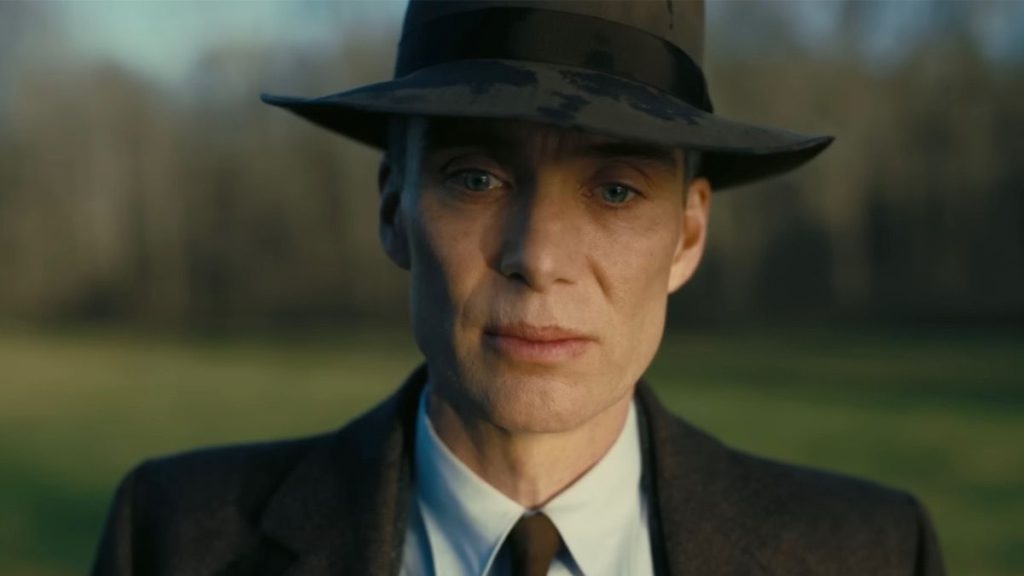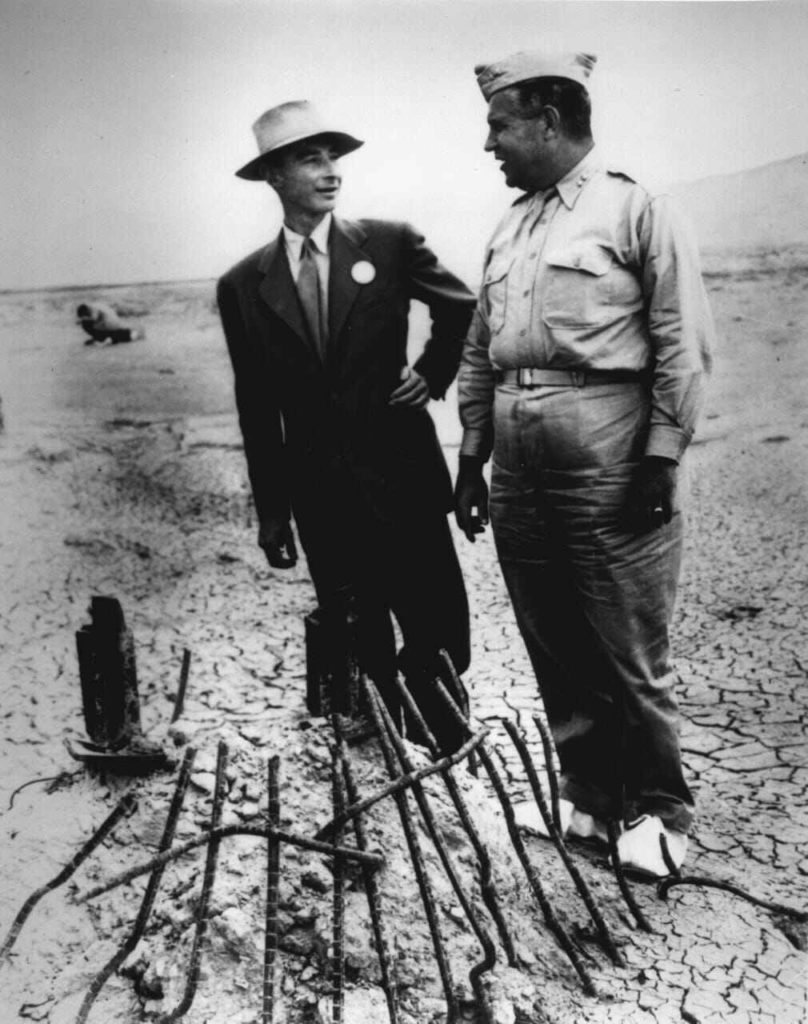UNITED STATES: In the race of Barbie Vs Oppenheimer, we choose to go with Christopher Nolan first because why not? Based on J. Robert Oppenheimer’s biography “American Prometheus” by Kai Bird and Martin J Sherwin, this Nolan thriller showcases the United States’ race against time to build one of the deadliest weapons in the history of mankind and the aftermath of its destruction, which slowly crawls as a horror if we look for the devil in the details.
Oppenheimer’s revolutionary work in quantum mechanics and theoretical physics served as a springboard for his contributions to the creation of the atomic bomb. He received honours and acknowledgement for his talent from the scientific world, but did he know the consequences?
In this article, we’ll delve into the latest release by Christopher Nolan and the life of Oppenheimer.
Nolan’s nuclear vision in Oppenheimer and his dream team led by Murphy
Looking at the last film by Nolan, Tenet, which twists our minds with its extremely confusing sci-fi concept, it proves that he is a man who loves to play with time. This continues with Oppenheimer too, where he uses every single second to build a tense moment that also tries to replicate the reality of what might be the struggle to craft such a catastrophic weapon.
Since the audition of Batman Begins, Nolan may not have found a perfect Dark Knight in Cillian Murphy, but he surely discovered his long-time ally appearing in his most of the films. In The Dark Knight Trilogy, he joined the Nolan team as Scarecrow and continued his journey with a stellar performance that needed no introduction. Despite his acting potential, he never played the role of a lead character in Nolan’s films.

With Oppenheimer, Nolan breaks the chain, and this time he gives the chance of steering the acting department of Oppenheimer to Murphy, who not only has to act but also express most of his emotions without any dialogues or action. As usual, he succeeds in doing it so.
Murphy, as an actor, plays a man who is a cursed genius and delivers the tension to create a nuclear bomb. He also showcases the impression the explosion left on the world merely with his eyes. No dialogue in such a situation explores the gravity of his performance, where we also understand what Oppenheimer has been through. He breathes life into this Nolan-created world which is brimming with other talented casts. Or, in particular, a dream team of any film director.
Besides Murphy, Robert Downey Jr., Emily Blunt, Matt Damon, Florence Pugh, Josh Hartnett, Casey Affleck, Rami Malek, and Kenneth Branagh also delivers their best. Especially for RDJ, seeing him on a big screen after such a long time that, too, not in the role of Tony Stark/Iron Man is a perfect treat on performance level. He puts on the boots of Lewis Strauss, who was a member of the US Atomic Energy Commission (AEC).
Coming back to Nolan and his directorial vision in Oppenheimer, he is a man who hates CGI, and thus he exploded a real plane in Tenet. This time he delivers the authenticity of a bomb explosion with a splendour use of practical effects, which is now a rare phenomenon in Hollywood. Credits must be given to Scott Fisher and Andrew Jackson, who adhered to the idea of Nolan, which gives a perfect experience fused with Hoyte van Hoytema’s brilliant cinematography.
Talking about the story, it progresses in Nolan’s favourite non-linear format, evident in his most of his featurette. Besides not being an action-heavy, Oppenheimer relies on long-running conversations between its characters, which acts as the soul of the film.
Many critics have labelled Oppenheimer as Nolan’s best work, which might be untrue. This brings us to the major drawback of this film. The mentioned long-running conversation scenes can be considered a major drawback. There are other lagging points, too, but delving into them might spoil the story.
The Dark Knight Trilogy and Interstellar are the best of Nolan’s works to date. Oppenheimer also does the job, but not on the level of these films. It’s an opinion and maybe a point of conflict for some, but it is what it is.
Verdict:
Christopher Nolan-directed Oppenheimer is high on performances and technical aspects, which make this film a worth watch for cinephiles. The long conversation scenes might spoil the mood sometimes but can be ignored. This Nolan thriller is filled with tense drama; however, it is not a perfect watch for the one unaware of the actual events.
Transcontinental Times rating: 4.7/5
A deeper look into the life of Oppenheimer
Few scientific achievements have had as much of an impact on history as the creation of the atomic bomb. The development of this lethal weapon, spearheaded by the brilliant physicist J. Robert Oppenheimer, was plagued with difficulties, discoveries, and moral conundrums.
The United States realized it needed to use nuclear fission for military objectives as soon as World War II started. To construct an atomic bomb, the top-secret research and development project known as the Manhattan Project was started.
Oppenheimer was chosen to lead the scientific division at Los Alamos Laboratory as a part of the Manhattan Project. Here, he led a group of outstanding scientists as they pursued the first atomic bomb with tenacity before the Axis forces.
The world saw the first successful atomic bomb explosion on July 16, 1945. The test, with the codename “Trinity,” was conducted in the barren desert of New Mexico. The explosion’s raw strength proved once again that atomic weapons are realistic.

It was then decided to utilize the bomb in battle after the Trinity test demonstrated its capability, and the rest is a horror history. Tens of thousands of people were at once killed when the United States unleashed the first atomic bomb on Hiroshima on August 6, 1945. Another bomb was dropped on Nagasaki three days later.
The use of atomic weapons against human populations provoked heated discussions and ethical questions. Oppenheimer later became a supporter of nuclear arms control because he felt conflicted about the effects of his work.
Bhagavad Gita’s impact on Oppenheimer
Oppenheimer, as shown in the movie, was highly influenced by the Bhagavad Gita, often referred to as the Gita. It is a 700-verse Hindu scripture that is part of the Indian epic Mahabharata. It presents a conversation between Prince Arjuna and the Bhagwan Shree Krishna, who serves as his charioteer. The dialogue takes place on the battlefield just before the Kurukshetra War, where Arjuna is torn between his duty as a warrior and his moral dilemma about fighting in the war.
The Gita addresses profound philosophical and ethical questions, exploring concepts such as duty (dharma), righteousness, the nature of reality, and the self. It also delves into various paths of spiritual practice, including the path of devotion (bhakti), knowledge (jnana), and selfless action (karma yoga).
Oppenheimer is thought to have become more interested in the Bhagavad Gita while attending the University of California, Berkeley when he came across several Indian philosophical books. Throughout his life, he reportedly frequently referenced a copy of the Bhagavad Gita that he always carried with him. He was known to repeat portions from the Gita during debates and reflective periods, according to some of his coworkers and acquaintances.
One of the most famous instances of Oppenheimer’s connection to the Gita came after the successful test of the atomic bomb during the Manhattan Project. Upon witnessing the explosion, he later recollected a line from the Bhagavad Gita: “Now, I am become Death, the destroyer of worlds.” These words express the profound implications and moral dilemmas that arose from the development of such powerful and destructive technology.
Many people have quoted Oppenheimer as saying, “Now, I am Death, the Destroyer of Worlds,” although this is not Bhagavad Gita’s genuine translation. It is verse 32 of Chapter 11 of the Gita. Bhagwan Shree Krishna assumes his Vishwarup or heavenly form at this point.
Exact words from Gita:
श्रीभगवानुवाच |
कालोऽस्मि लोकक्षयकृत्प्रवृद्धो
लोकान्समाहर्तुमिह प्रवृत्त: |
ऋतेऽपि त्वां न भविष्यन्ति सर्वे
येऽवस्थिता: प्रत्यनीकेषु योधा: || 32||
The kalah, in this context, refers to time rather than death; Lord Vishnu says that time is the cause of all devastation. Krishna tells Arjun that he, the supreme lord, will claim all, and the end of all is written as an explanation of the passing of all beings.
Oppenheimer’s admiration for the Bhagavad Gita serves as an example of how his scientific endeavours were bound up with philosophical and moral questions. The Gita’s lessons on responsibility, morality, and the effects of human behaviour struck a deep chord with him and, in some respects, mirrored the difficult and complex decisions he had to make throughout his work and life.
Oppenheimer was not the first scientist to be influenced by Bhagavad Gita, famous Scientists like Erwin Schrödinger, Carl Sagan, Albert Einstein, and Nikola Tesla all had mentioned Gita at some point in their life.
Also Read: Oppenheimer: Christopher Nolan Stuns the Internet with Cinematic Trailer

